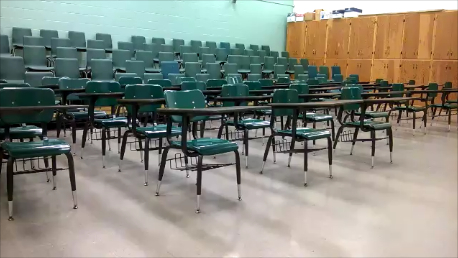"Tactics For The Future"
“[The] C's has its statement, and MLA has its statement, and NCTE has its statement, and everybody's got their statement about why the treatment of adjunct faculty is unjust. We need to figure out more ethical ways to handle the situation, and, you know, everybody knows. I don't think there are very many people in our field who don't understand how bad the situation is.”
-- Seth Kahn, Associate Professor, West Chester University
“They buy fair trade coffee. How about fair trade education?”
-- Matt Williams, Adjunct, Vice President, New Faculty Majority
As is often the case with wide-spread, institutionalized exploitation, laying out the many facets of the problem can be much easier than coming up with an effective response. Indeed, a central dilemma regarding the demand for greater equality between adjunct and full-time faculty is reflected in the excerpts above from Seth Kahn and Matt Williams.
On one hand, higher education contains a very large mass of contingent laborers who are tasked with teaching the majority of coursework, but continue to receive a marginal share in the institutional fruits of that labor. On the other hand, there are the “departments” who, returning to an earlier statements from Cary Nelson, “originated the problem. . . . [and] pioneered exploitation hiring amongst the faculty,” a pattern of marginalization which, according to the information provided in Fulwiler and Marlow’s interviews, is perpetuated today by institutions of higher education as a whole.
This apparent conflict of interest between the exploited and the institutions doing the exploiting raises an important question. If, as Seth Kahn suggests, “everybody knows” the plight facing contingent faculty, then what can be done to persuade institutions of higher education to cease their exploitative behaviors when they are committing these acts of exploitation knowingly? What are the “more ethical ways to handle the situation,” and how do we go about defining Williams’ concept of “fair trade education,” and, most importantly perhaps, once we answer these questions, how do we convince “[a]dministrators [who] are,” according to Suzanne Hudson, a Lecturer at the University of Colorado, in Boulder, “addicted to cheap labor” to share the wealth?
Answers to these questions do not come easy, but Fulwiler and Marlow’s interviewees provide viewers with some much-needed food for thought.
For instance, Mike Palmquist, the Associate Vice Provost of Learning and Teaching at Colorado State University, suggests that providing adjunct faculty with longer terms and more pay has caused improvement. Sue Doe, an Assistant Professor at Colorado State University, echoes Palmquist’s sentiments, emphasizing the success of “renewable contracts.” Yet other responses range from the demand for adjunct unionization to University of Akron Professor, William H. Thelin’s call for “compositionists . . . [to] ban together” for “a national assault on the media about what good composition instruction should look like.” One element that is shared by virtually all of the faculty interviewed is the desire to be heard, the longing for the problems of contingency to be made public.
If the first step toward resolving the problems of contingency is making those problems public, then, in many ways, Con Job has taken this first step. Fulwiler and Marlow confront audiences with the faces and voices of contingency, and, in so doing, have helped to shed light on a host of problems that poison the heart of higher education. The authors’ decision to convey their research through a digital medium and then publish it online has made public narratives that, otherwise, may have never left the faculty lounge.
